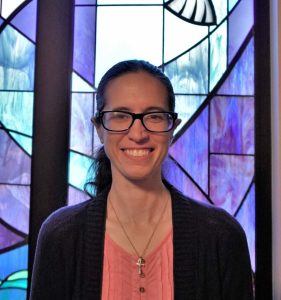But is It Art?
October 26, 2023
When you’re young, almost anything you create you call art. How many refrigerators are filled with meandering rainbow squiggles with little regard to “the lines”? How many Christmas trees have popsicle stick reindeer or twisted pipe cleaner wreaths? So often, it’s seen as beautiful simply because you made it.
At some point, though, we all tend to grow up. We’re expected to learn and improve. Art is more about technique and influence and style. The more years pass, the more of us shyly demur and say, “Oh, I can’t do that. I’m not an artist.”
PLR hosted a retreat recently called “Worship and the Arts,” which featured Rev. Anna Strickland from A Sanctified Art. As she encouraged us to engage in various arts and crafts, she told us some of her own story. As a kid, she got antsy and distracted in church. Very quickly she learned that to be good meant to be very still and very quiet and this was the part of herself that was appropriate for worship. As she grew up and connected with college ministry, she was increasingly surrounded by different experiences of worship. To be in holy space meant that she was invited – not in part, but in whole.
Whenever she got us started on a new craft, she told us that there wasn’t a right way or a wrong way to do things. We were creating something that didn’t need to be displayed. We could just explore the colors and materials and patterns. That’s so different from how we usually engage art. The parts of all of us that wanted to insist that “I’m not an artist” or “I can’t do that well enough” were stilled. We created individually and together.
Anna talked about what it meant to worship with our whole selves – to find ways to go beyond sound and sight. The world is so much bigger than what we often see in our worship services. What would it look like to brainstorm ways to engage all our senses or to tap into our multiple intelligences? We discussed ideas and she invited all to share things that they had done in their churches. In a way, we started to recapture some of that artistic freedom that we had in childhood. Remembering how that feels makes a compelling case for inviting our congregations to experience this, too, as part of showing God awe and reverence.
There’s more than one way to preach the Word. There are more voices within our churches, more talents and blessings that enrich our communities. We talked about prayer stations, painting, and theatre. We talked about having worship bags – not just for the kids, but for adults, too. How congregants can hear the Word proclaimed: “I am the potter, and you are the clay” while the kneading and shaping their own ball of clay. We can knit scarves for those without homes while we do a hymn sing. We can smell the frankincense and myrrh instead of just talking about it (being careful of allergies and other sensitivities to smell).
Including the whole self isn’t always easy. We have so many toxic views about bodies: too tall or short, too skinny or fat, too scarred or pale. We have been taught to see some bodies as ideal and others as less than. We believe we were created in the image of God, body and soul. To include all bodies is to respect that some bodies have very different experiences than others.
They may face shame and judgment for being trans or disabled. They may inherit generations of trauma that continue day by day because of how people view their skin color.
Bringing more art into our worship helps us to think about ways that different bodies and different minds might experience each service. We can start to see more clearly the hazards and dangers that others face. Tapping into different parts of ourselves, including the uncomfortable parts, also creates an opportunity for different folks to shine.
In the closing worship service, Anna preached on Exodus 35:4-36:7, which is certainly not most preachers’ go to passage. It details the many different materials that Moses collected from the Hebrew people in order to build the tabernacle. People with a variety of skills were called forward to join the work of fashioning a unique sacred space that they could all share. Two of the artisans are even mentioned by name. Through their willingness to put themselves out there, to possibly make mistakes, to share what they had, they became part of the fabric and supports of a place where they could meet God. They have long since died, but their art lives on in scripture and in our imagination. It honors God and still inspires us. The question shouldn’t be “is it art?” It should be “what do you think God will do if we dance with the Spirit today?”
Written by Rev. Elana Keppel Levy



